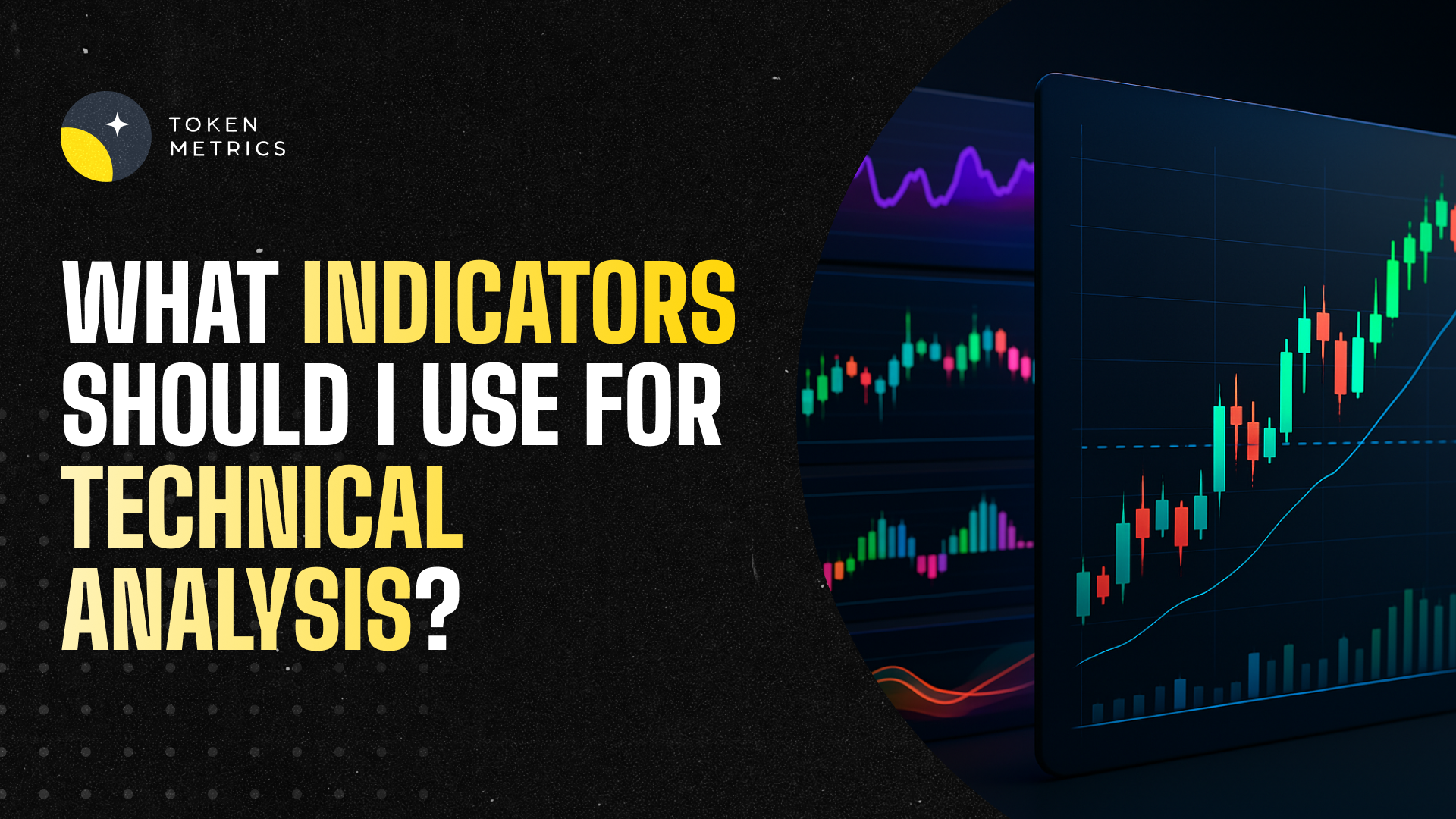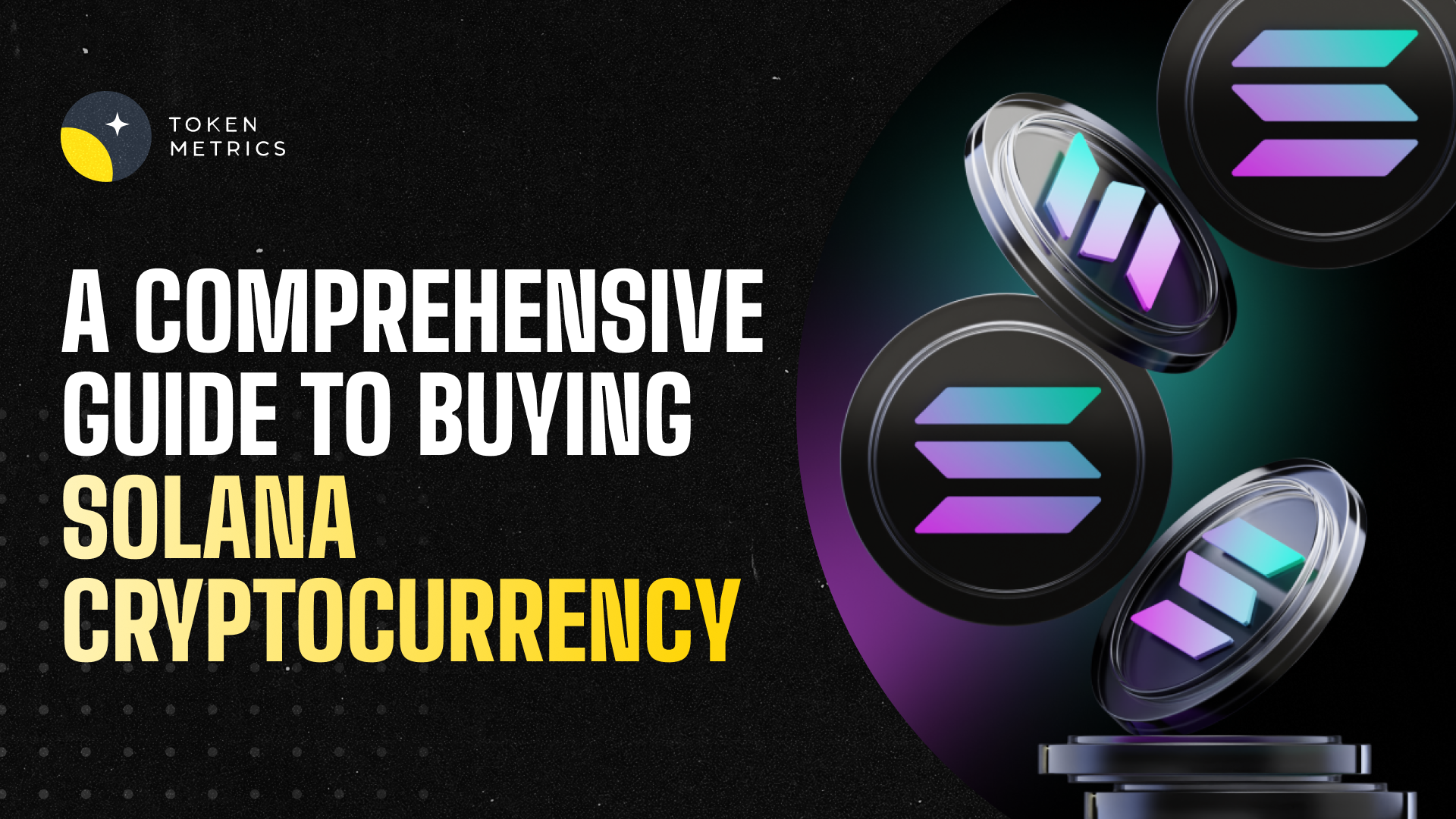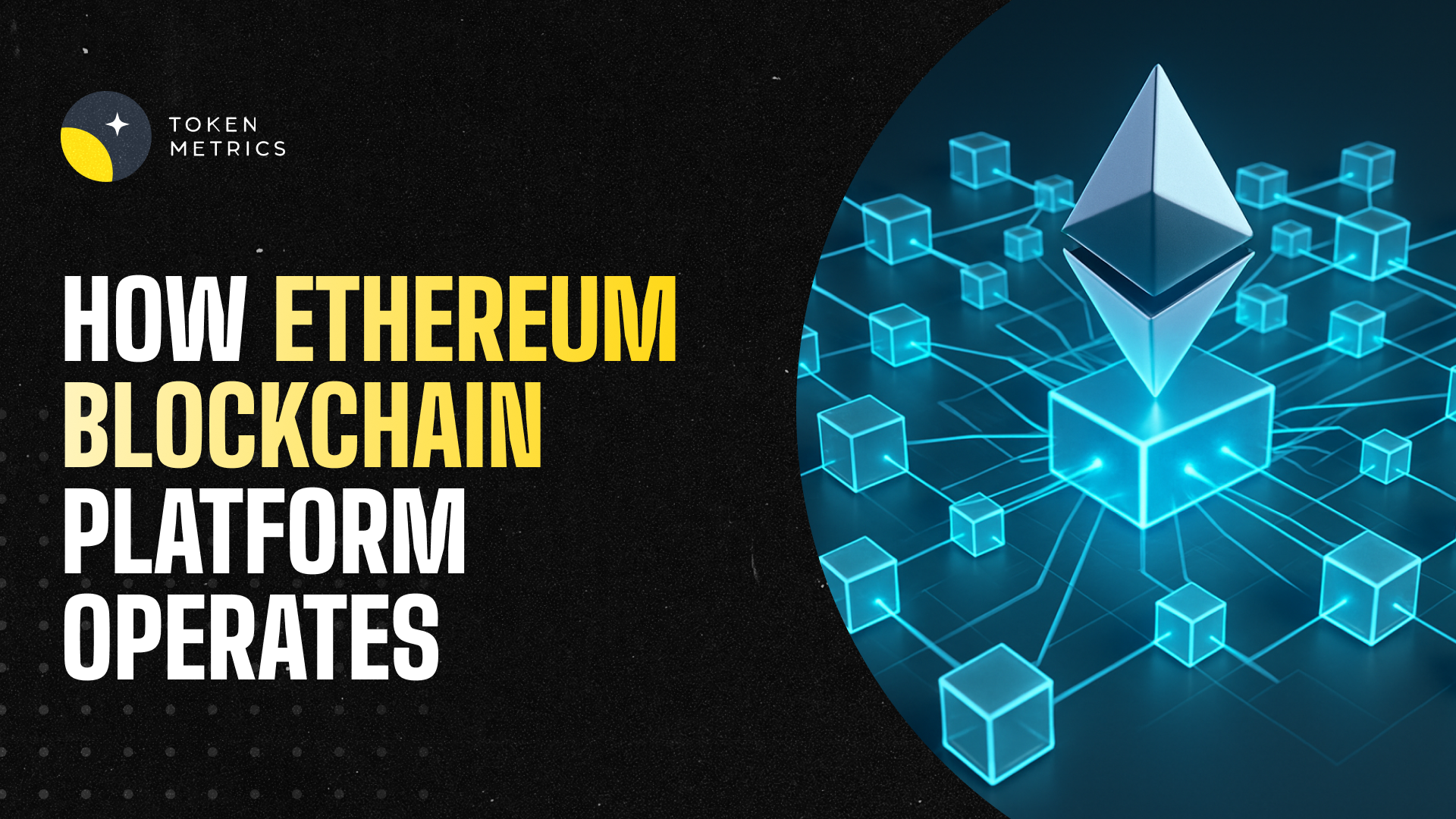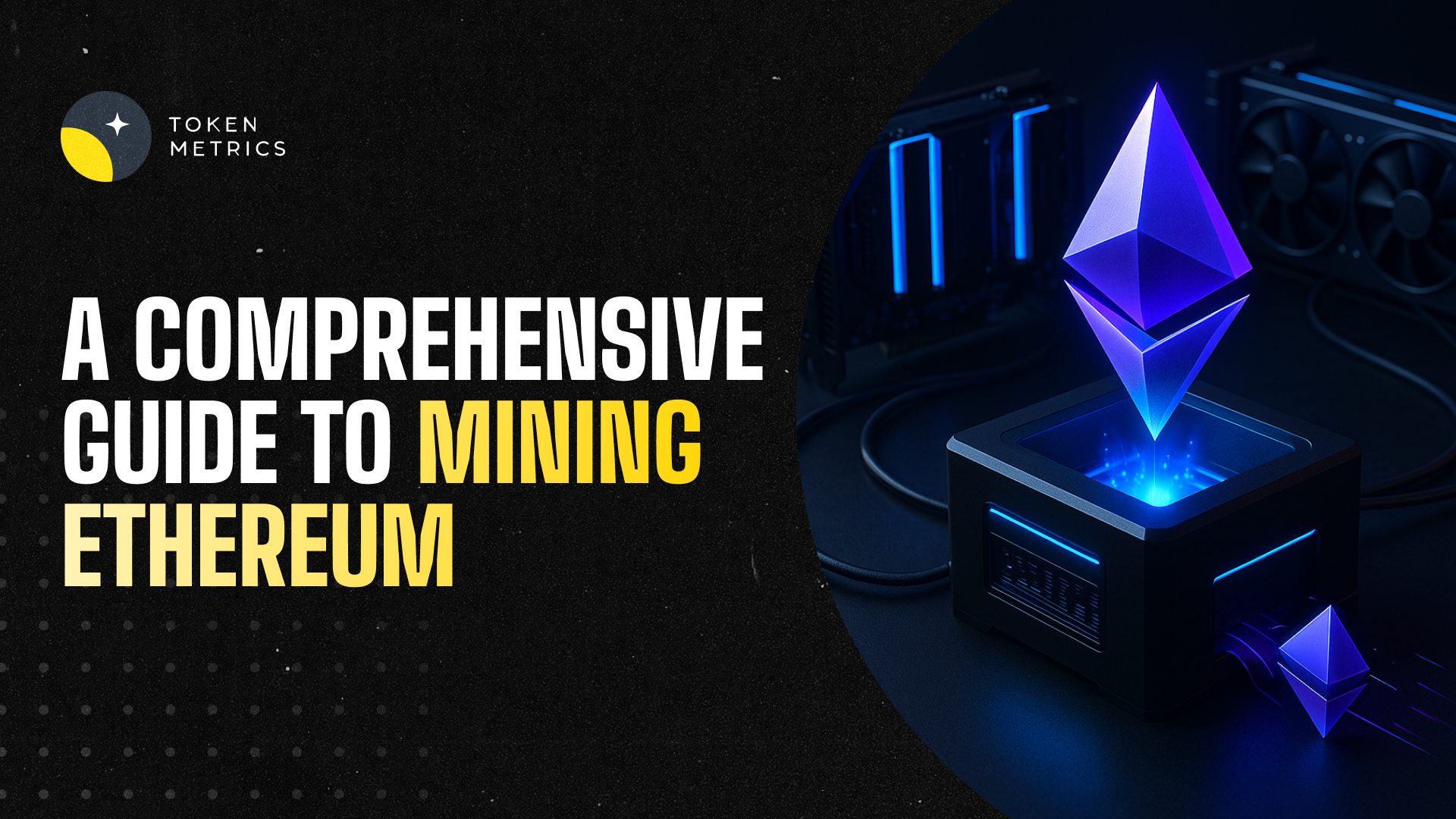What Indicators Should I Use for Technical Crypto Analysis?

If you’re serious about trading cryptocurrency, technical analysis (TA) is an essential skill. It helps you understand price movements, predict trends, and identify high-probability entry and exit points.
But with hundreds of technical indicators available, one common question is: “Which indicators should I use for technical analysis?”
In this guide, we’ll break down the most effective indicators for crypto trading, explain how they work, and show you how Token Metrics combines them with AI-driven insights to help you trade smarter.
Why Use Technical Indicators in Crypto?
Unlike traditional stocks, cryptocurrency markets trade 24/7, are more volatile, and are largely driven by sentiment and speculation.
Technical indicators help you:
- Identify trends (bullish or bearish).
- Pinpoint support and resistance levels.
- Detect overbought or oversold conditions.
- Find entry and exit points with better timing.
The key is not using one indicator in isolation but combining multiple tools for confirmation—which is exactly what Token Metrics does with its AI-driven trading signals.
The Most Important Indicators for Technical Analysis
Here are the must-know indicators for crypto traders:
1. Moving Averages (MA & EMA)
What they do:
Moving averages smooth out price data to help you identify overall market direction.
- Simple Moving Average (SMA): Calculates the average closing price over a set period (e.g., 50-day, 200-day).
- Exponential Moving Average (EMA): Gives more weight to recent prices, making it more responsive.
How to use them:
- Golden Cross: When the 50-day MA crosses above the 200-day MA → bullish signal.
- Death Cross: When the 50-day MA crosses below the 200-day MA → bearish signal.
Best for:
Spotting long-term trends and momentum.
2. Relative Strength Index (RSI)
What it does:
RSI measures price momentum and identifies overbought (70+) or oversold (30-) conditions.
How to use it:
- Above 70: Asset may be overbought → possible pullback.
- Below 30: Asset may be oversold → potential bounce.
Best for:
Finding reversal points and confirming trend strength.
3. Moving Average Convergence Divergence (MACD)
What it does:
MACD measures the relationship between two EMAs (usually 12-day and 26-day) and generates buy/sell signals based on crossovers.
How to use it:
- Bullish crossover: MACD line crosses above the signal line.
- Bearish crossover: MACD line crosses below the signal line.
Best for:
Spotting trend changes early.
4. Bollinger Bands
What they do:
Bollinger Bands create a price channel around an asset using a moving average plus/minus two standard deviations.
How to use them:
- Price near upper band: Potential overbought condition.
- Price near lower band: Potential oversold condition.
- Band squeeze: Indicates upcoming volatility.
Best for:
Predicting volatility and identifying breakout opportunities.
5. Volume Indicators (OBV & VWAP)
What they do:
Volume indicators confirm price movements and help spot trend strength.
- On-Balance Volume (OBV): Tracks buying/selling pressure.
- VWAP (Volume-Weighted Average Price): Shows average price relative to volume.
Best for:
Confirming whether a trend is supported by strong trading volume.
6. Fibonacci Retracement
What it does:
Identifies key support and resistance levels based on Fibonacci ratios (23.6%, 38.2%, 50%, 61.8%, etc.).
How to use it:
- Place retracement levels between swing highs and lows to find potential pullback or breakout zones.
Best for:
Setting targets and identifying price zones for entries/exits.
7. Stochastic Oscillator
What it does:
Measures price momentum by comparing closing prices to recent price ranges.
How to use it:
- Above 80: Overbought.
- Below 20: Oversold.
- Use crossovers for potential buy/sell signals.
Best for:
Short-term traders looking for momentum shifts.
8. Ichimoku Cloud
What it does:
Provides a complete view of trend, momentum, and support/resistance levels in one indicator.
How to use it:
- Price above cloud: Bullish.
- Price below cloud: Bearish.
- Cloud crossovers: Signal trend reversals.
Best for:
Swing traders who need multi-factor confirmation in one tool.
How Token Metrics Combines Indicators with AI
Instead of manually tracking dozens of indicators, Token Metrics uses AI to analyze 80+ technical, fundamental, and sentiment-based data points for each asset—giving you actionable insights without the guesswork.
Here’s how:
1. AI-Powered Bullish & Bearish Signals
Our system combines RSI, MACD, MAs, and more to generate real-time buy/sell signals.
2. Trader & Investor Grades
- Trader Grade: Helps short-term traders focus on cryptos with strong technical setups.
- Investor Grade: Identifies long-term investment opportunities with strong fundamentals.
3. Narrative Detection
Token Metrics tracks emerging narratives (AI tokens, DeFi, etc.) so you can spot trends before they explode.
4. AI-Managed Indices
Don’t want to analyze charts? Our AI-driven indices automatically rebalance portfolios using technical indicators and market conditions.
How to Combine Indicators Effectively
The most successful traders don’t rely on one indicator. Instead, they combine them for confirmation.
Example:
- Use RSI to spot oversold conditions.
- Confirm with MACD bullish crossover.
- Check volume to ensure strong buying pressure.
When multiple indicators align, your trade has a higher probability of success—and Token Metrics does this automatically.
Advanced Tips for Using Indicators
- Don’t Overload: Use 3–5 indicators for clarity.
- Adjust for Volatility: Crypto is more volatile than stocks—shorten timeframes for faster signals.
- Combine With Fundamentals: Use Token Metrics Investor Grades to pair TA with project fundamentals.
- Practice Risk Management: Even the best indicators fail—always use stop-loss orders.
Final Thoughts
So, what indicators should you use for technical analysis?
Start with moving averages, RSI, MACD, Bollinger Bands, and Fibonacci levels—then add volume indicators and advanced tools like the Ichimoku Cloud as you gain experience.
But here’s the truth: indicators are only as good as the trader using them. That’s why Token Metrics simplifies the process by combining dozens of technical indicators with AI-powered analysis, giving you clear, actionable insights for smarter trades.
Whether you’re a day trader or a long-term investor, Token Metrics helps you use technical indicators strategically—not emotionally.
Create Your Free Token Metrics Account

.png)




%201.svg)
%201.svg)


%201.svg)










.svg)




.png)